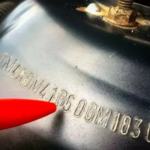Grinding is a general term related to growing, giving, smoothness of smoothness before decorating its surface, but it is also used to name the process of giving the material a certain form using manual or power tools. Although a significant part of the grinding refers to surface decoration, this term can only be limited by the length of the function, since grinding is also an important operation to form the volume of the product. Without a doubt, you will have many situations where other tools cannot be able to process a tree in the right way. For example, in cases where a chisel or rubble can split a fiber or when a saw is used only to cut out gross outlines, and the main form and finish are done with grinding. Grinding is the removal of wood material with a many times repeating movement of abrasive material, such as sandpaper, with many sharp small cloves. The essence of this term also applies to the action of the file, as well as special electrical tools.
In some cases, manual and mechanized methods can be used, but the latter is generally faster and more efficient.
In the heart of the whole process lies sandpaper, or a skin, in the form of a sheet or roll on which particles of abrasive are pasted. These particles are called “grain”, which can have a number or characterize in some other way. Usually you work in different abrasives, moving from larger grain to smaller.
A set of skins
Soft blanket or fabric to protect the product when decorating
Group for grinding
Set of homemade grinding bars
Table grinding nozzle for electric drill and electric drill, 550 watts
Vibration grinder
Ribbon grinder
Silicon skin
Used for general finishes in carpentry.
Barrow skin
It is preferred by the riflers and masters of thin carpentry work for its excellent finishing properties.
Aluminum oxide
Good universal skin, especially for mechanized grinding.
Tear off the strips of skins of the desired size along the edge of the steel ruler. To tear “by eye” is inconvenient and uneven.
Silicon carbide
Mostly for metal, but is suitable for some hard varnishes and finishes used on furniture
Wrap the skin around the bars you have made, wrap the edge of the strip inside the edge of the strip to get a flat edge that will be pressed to the bar.
Squeeze the workpiece in a vice and use a cork or wooden bar as a file, preferably with two hands, working across the fibers change the skin when it stops working and clogs with waste (especially with tarry wood).
Metal washcloth
It is mainly used for smoothing in the process of grinding or for applying wax during the finish process.
It is easy to make bars of various shapes for grinding bends and angles. Mineral materials such as segments of plastic tubes can serve as a suitable profile of a bar for working with concaves. You can work as a file, holding both ends with your fingers to give stability to actions directed across the fibers. The grinder method is very universal. Here one hand grinds, the other turns the part.
You can act with a strip of skins as a “bath towel” for accuracy processing of round profiles.
Work with a cork bar
The cork grinding block is usually used on flat surfaces wrap the bar with the skin, fix the part in the vice and, tightly pressing the bar, work on them along the fibers can improve control and increase the pressure if you work with two hands. Use a skin with a granularity of 1 20 i 80.
If the fiber goes in another way, try to work along the fibers, otherwise scratches will be visible.
In general, on wooden products you should not leave sharp edges, angles. The final processing should “soften”, “twist” all the edges with a small skin (granularity 400)






